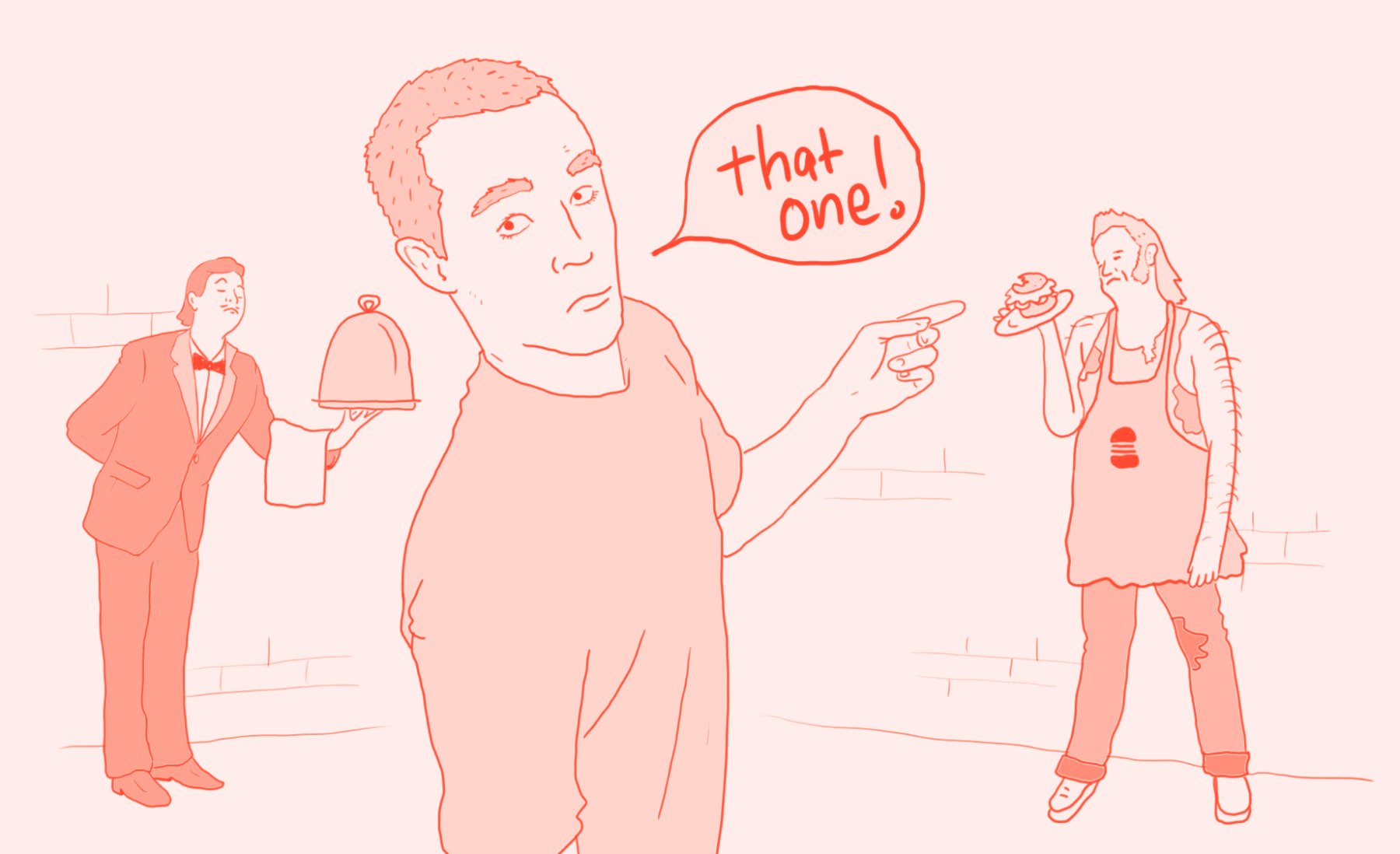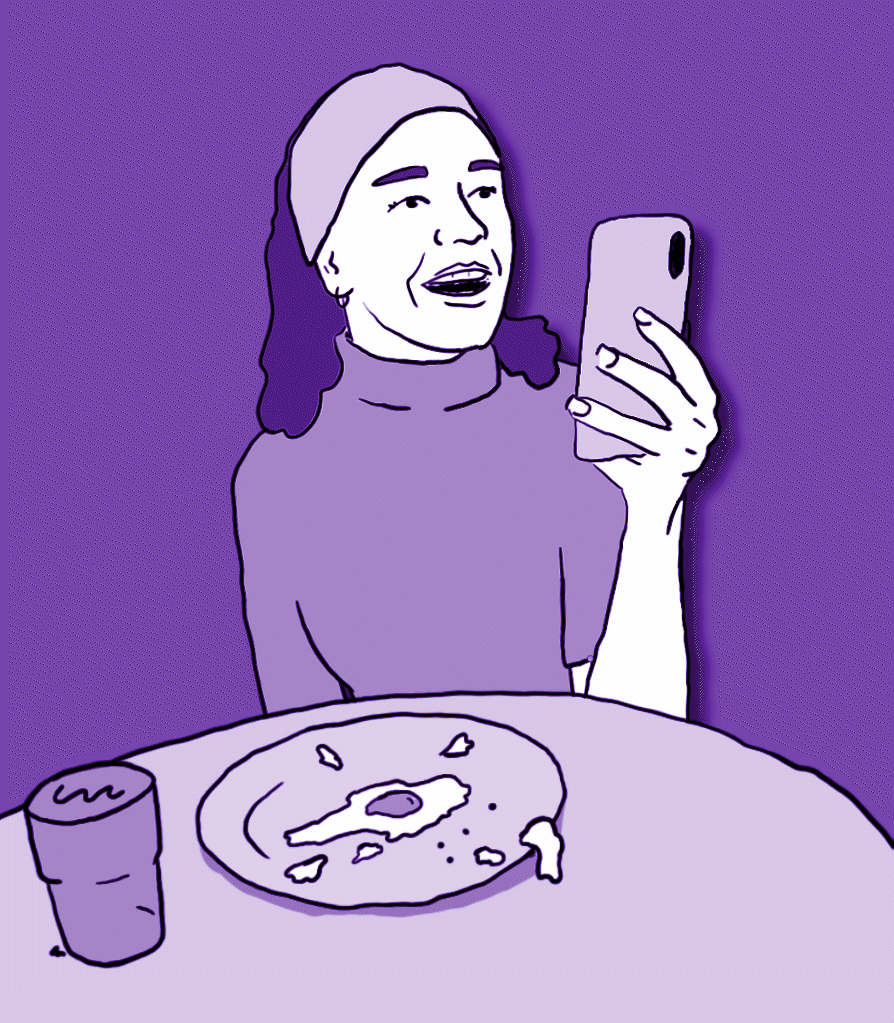The Why #76: Why do I feel compelled to check out the menu before I go to a new restaurant?
By Dan Monheit 17.11.23
Question submitted by Kerry, Beaumaris
I hear you Kerry. I mean, imagine turning up to an Italian restaurant completely blind to what’s on offer. Will the ragu be served on rigatoni or pappardelle? Is the rocket salad a simple rocket salad or is it in fact rocket and pear? And do they even do a Hawaiian pizza?
Since the dawn of the smartphone era, it seems we’ve been on a one-way mission to remove any mystery from our lives. Is it hot in Perth tomorrow? How long will it take to drive to the in-laws at 3:00pm on a Wednesday? What ever happened to the guy who played ‘The Next Door Neighbour’ in Home Improvement? And on it goes, until one day, surely, we’ll just know everything. Including what we’ll be eating for dinner at 8:37pm tomorrow when we hit up that trendy new restaurant.
Some might say we’re control freaks. Others would argue we’re just hyper-aware of allergens. But maybe, just maybe, there’s something behavioural at play…
The Ambiguity Effect
The Ambiguity Effect is a cognitive bias that describes our tendency to avoid options where the chance of a positive outcome is unknown.
The Ambiguity Effect was first identified in a series of studies by Daniel Ellsberg in 1961. During one experiment, Ellsberg presented two buckets, each containing 100 bouncy balls. Participants were informed that ‘Bucket A’ contained exactly 50 red balls and 50 black balls, and that ‘Bucket B’ contained an unknown number of each.
Ellsberg then offered participants the chance to place a bet on whether they could pull out a red or black ball from either bucket. If they guessed correctly, they’d win an entire dollar (to be fair, $1 in the 1960s was equivalent to about $10 today). To be clear, there were four options they could bet on; a red ball from Bucket A, a black ball from Bucket A, a red ball from Bucket B or a black ball from Bucket B.
What Ellsberg found was that the vast majority of participants chose to bet on one of the first two options (selecting from Bucket A). This was the case even though there was every chance Bucket B could have had way more favourable odds. It seems that not knowing what the chances of winning were was enough to steer most people in the opposite direction.
Eating out can be risky business. How do we know if we’ll like any of the options at said new restaurant? And if we like nothing, what a disaster that would be!
When confronted with too many unknowns, we will often default to the easiest choice of all — the usual, safe, possibly boring one that’s served us well 100 times before. Good news for ol’ faithful. Bad news for new brands trying to squeeze into our repertoire.
For marketers, it pays to remember that ‘too much ambiguity’ is a great way to generate ‘not enough sales’. Help customers avoid the anxiety of not knowing by ensuring the critical info they need is always right at hand. This could mean detailed testimonials or copious food shots If you’re a meal delivery service, easy to understand price ranges if you’re a dentist or videos that capture ‘fabric flow’ if you’re retailing activewear online. Of course, if you’re a restaurant, for the love of lunch, please put your menu online.
Behaviourally Yours,
PS If you missed the last edition, you can still check why unfinished DIY projects do our head in here.
Forwarded this? Subscribe to join thousands of others who receive The Why fortnightly.
Bad Decisions Podcast
Learn more about Behavioural Science with the Bad Decisions podcast.
Got a question?
Is there something you’ve always wondered about?
Send it through to AskDan@hardhat.com.au
Want more?
Join Dan Monheit’s ‘Terrible Advice for Excellent Marketers’ session at the GENZA Conference 2023 where he’ll join an array of incredible speakers to help marketers fully understand tomorrow’s consumers.
The Why, The Book
If you’re a fan of having your curly questions answers, secure your copy of the newly released Amazon #1 Best Seller ‘The Why, The Book’ by Dan Monheit here.


